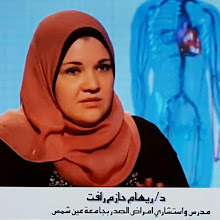.General Considerations:
■Age: Majority <40 years
■Predisposed
IV drug abusers
Alcoholism
Immunodeficiency
CHD
Dermal infection (cellulitis, carbuncles)
■Sources
Tricuspid valve endocarditis
Most common cause in IV drug abusers
Pelvic thrombophlebitis
Infected venous catheter or pacemaker wire
Arteriovenous shunts for hemodialysis
Drug abuse producing septic thrombophlebitis (eg, heroin addicts)
Peritonsillar abscess
Osteomyelitis
■Organism
S. aureus
Streptococcus
Clinical Findings
■Sepsis
■Cough
■Dyspnea
■Hemoptysis: Sometimes massive
■Chest pain
■Shaking chills
■High fever
■Severe sinus tachycardia
■Location: Predilection for lung bases
Imaging Findings
■Multiple round or wedge-shaped densities
■Cavitation
Frequent
Usually thin-walled
■Migratory: Old ones clear and new ones arise
■Pleural effusion is rare
■Hilar and mediastinal adenopathy can occur
■CT findings
Multiple peripheral parenchymal nodules
Cavitation or air bronchogram in more than 89% : Cavities are thin-walled and may have no fluid level
Wedge-shaped subpleural lesion with apex of lesion directed toward pulmonary hilum (50%)
Feeding vessel sign = pulmonary artery leading to nodule (67%)
Differential Diagnosis of Small Cavitary Lung Lesions
Septic emboli
Rheumatoid nodules
Squamous or transitional cell metastases
Necrotizing Granulomatosis
Complications
■Empyema (39%)
■Age: Majority <40 years
■Predisposed
IV drug abusers
Alcoholism
Immunodeficiency
CHD
Dermal infection (cellulitis, carbuncles)
■Sources
Tricuspid valve endocarditis
Most common cause in IV drug abusers
Pelvic thrombophlebitis
Infected venous catheter or pacemaker wire
Arteriovenous shunts for hemodialysis
Drug abuse producing septic thrombophlebitis (eg, heroin addicts)
Peritonsillar abscess
Osteomyelitis
■Organism
S. aureus
Streptococcus
Clinical Findings
■Sepsis
■Cough
■Dyspnea
■Hemoptysis: Sometimes massive
■Chest pain
■Shaking chills
■High fever
■Severe sinus tachycardia
■Location: Predilection for lung bases
Imaging Findings
■Multiple round or wedge-shaped densities
■Cavitation
Frequent
Usually thin-walled
■Migratory: Old ones clear and new ones arise
■Pleural effusion is rare
■Hilar and mediastinal adenopathy can occur
■CT findings
Multiple peripheral parenchymal nodules
Cavitation or air bronchogram in more than 89% : Cavities are thin-walled and may have no fluid level
Wedge-shaped subpleural lesion with apex of lesion directed toward pulmonary hilum (50%)
Feeding vessel sign = pulmonary artery leading to nodule (67%)
Differential Diagnosis of Small Cavitary Lung Lesions
Septic emboli
Rheumatoid nodules
Squamous or transitional cell metastases
Necrotizing Granulomatosis
Complications
■Empyema (39%)

No comments:
Post a Comment